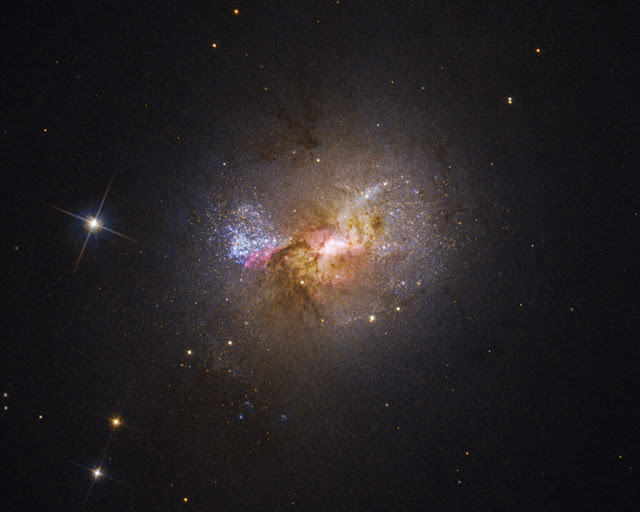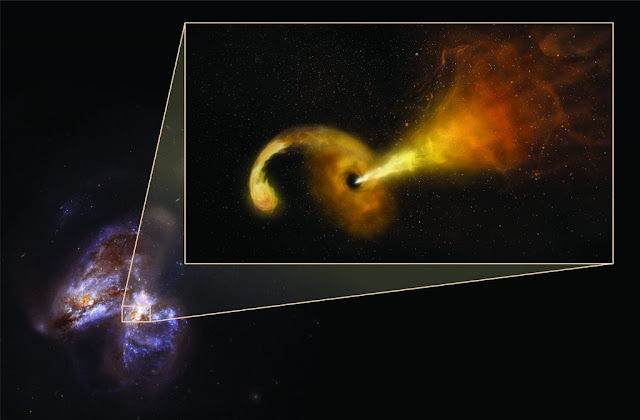The Hubble telescope captures a black hole that forms stars instead of absorbing them
Hubble Space Telescope scientists have found a black hole that produces stars instead of absorbing them in the center of a dwarf galaxy. The idea that black holes consume matter is called into question by this discovery.

These stars form in a peculiar way that is different from how stars form in larger galaxies. Before merging with a dense core of gas within the galaxy, gas may be seen circling the black hole known as Henize 2-10, according to the astronomers.

Next, a video in which you can observe this curious phenomenon:
Black holes are often described as the monsters of the universe—tearing apart stars, consuming anything that comes too close, and holding light captive. Detailed evidence from NASA’s Hubble Space Telescope, however, shows a black hole in a new light: fostering, rather than suppressing, star formation.
Hubble imaging and spectroscopy of the dwarf starburst galaxy Henize 2-10 clearly show a gas outflow stretching from the black hole to a bright star birth region like an umbilical cord, triggering the already dense cloud into forming clusters of stars.
Astronomers have previously debated that a dwarf galaxy could have a black hole analogous to the supermassive black holes in larger galaxies. Further study of dwarf galaxies, which have remained small over cosmic time, may shed light on the question of how the first seeds of supermassive black holes formed and evolved over the history of the universe.
Do not forget to share your opinion with us to provide you with the best posts !



0 Comments